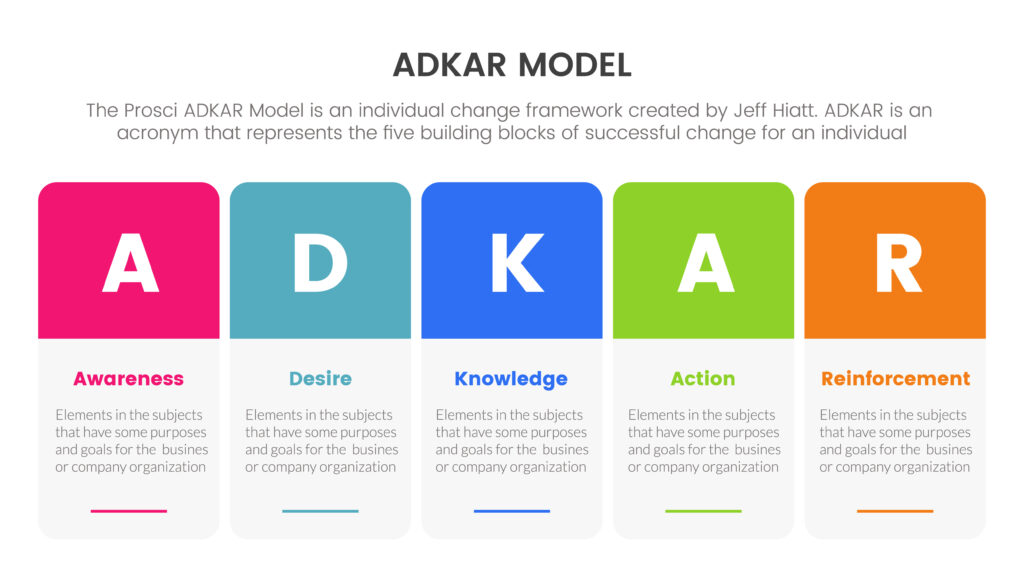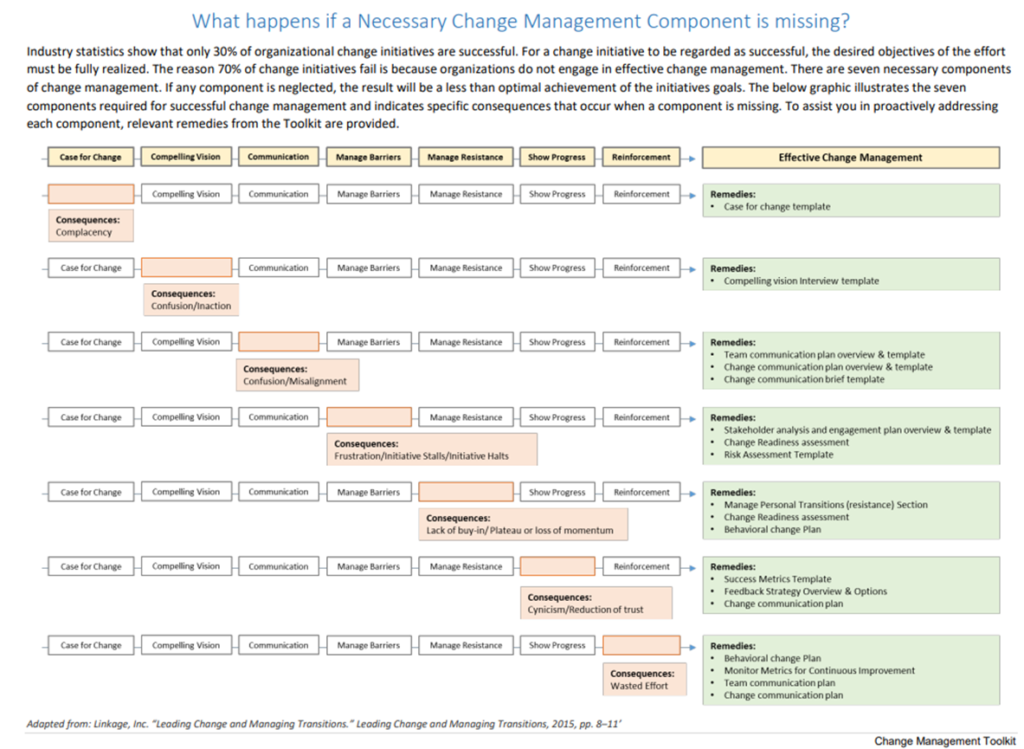Congrats! You and your team are on point to lead a significant organizational initiative. As you start with the end in mind: Do you imagine this initiative a success? Is the route from start to finish efficient with a mostly predictable course? Does this endeavor make a lasting improvement in your organization? Yes, yes, and yes! All along the way, change will be involved. Lack of effective change management can lead to company change that is unpredictable and expensive in terms of both time and resources. Effectively managing change will increase your chances of success, keep your initiative on track, and help to ensure that the change is integrated and carried forward, not just tolerated.
“It is not necessary to change. Survival is not mandatory.” – W. Edwards Deming
Change management is an investment. As an investment, you’ll be devoting, using, or giving of time, talent, emotional energy, etc., for a purpose or to achieve something. Change management is an investment in the success of your initiative, your people, and your organization. It does take a bit of effort in terms of planning on the front end and continued incorporation along the way but will pay dividends in the long run. Leveraging change management has been shown to provide the following benefits:
- Improved communication: When employees are properly informed about changes, it promotes better organizational communication.
- Enhanced productivity: With a clear plan for implementing changes, employees can focus on their work rather than worrying about what’s happening around them.
- Reduced stress: Uncertainty about the future can cause a lot of stress for employees, and change management helps to minimize this by providing clarity and structure.
- Improved morale: When employees feel like they are part of the change process and that their concerns are being heard, it can boost morale and help to create a more positive work environment.
- Enhanced creativity: With change comes opportunity, and change management can help unleash employees’ creativity as they explore new ways to do things.
- Improved decision-making: By establishing a clear process for decision-making, change management can help to ensure that everyone is on the same page when it comes to making changes.
Once you’ve decided to include change management in your project, you’ll need to select a model. There are many model options available. You can read more about several models in another of our blog posts: Embracing Change Management. As a part of our transition and activation projects at Yellow Brick, we utilize a version of the ADKAR model for change management shown below with adaptations for our clients and our transition and activation work.

When choosing a model, consider which will best fit your current organizational culture and values. You may flex certain components of the model to your organization’s ways of working. This is ok! There is no one perfect model. Even when you’ve selected a model that works well for your organization, you may find that some areas will be more challenging as you move through the phases. Within a particular phase, it’s not uncommon to discover your organization is missing a key component of change management. To strongly build out your change management approach, the following tool mentions strategies to address any gaps:

Pages from change_management_toolkit
With a big project on deck, jumping right in and getting to work can be tempting. Your efforts and the initiative can be navigated nimbly if time is taken to consider how to support the people you’ll be engaging in the work. Change management provides a method to support those involved, optimize the outcome, and embrace change. Success for all.

